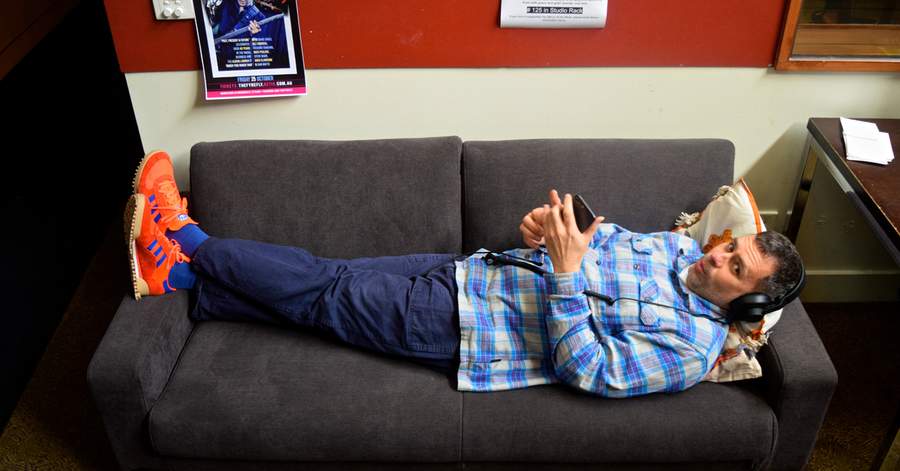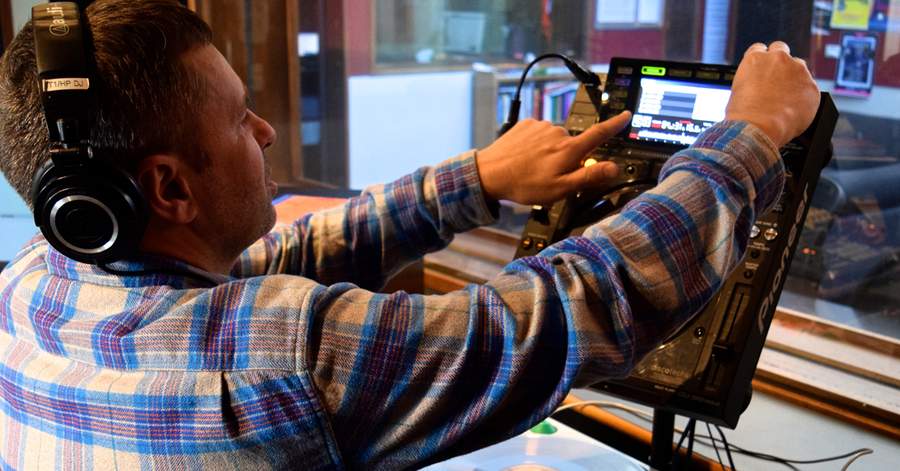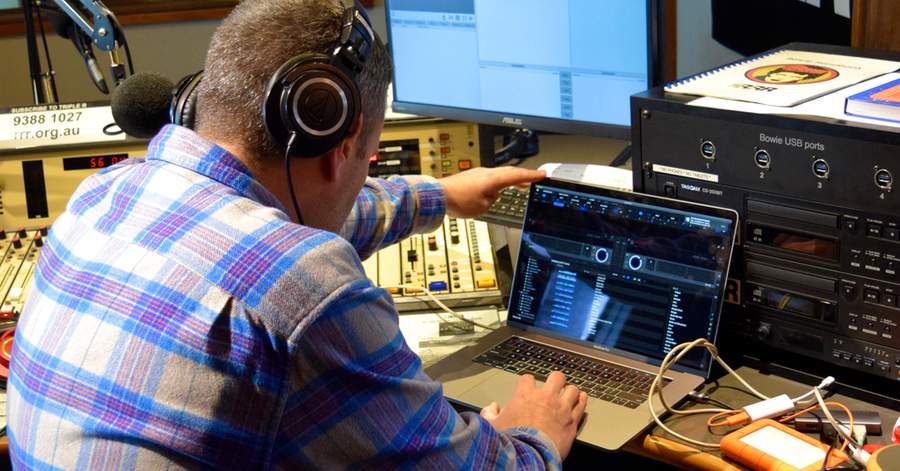How I Do My Show: Dan Dare
Every week, Dan Dare listens to a gargantuan amount of tunes for How High The Moon – streaming with one earpiece while pushing a pram, scanning through songs on his lunch break... He'll even sometimes buy tracks from Bandcamp during the show. Catch up on all of Dan's behind-the-scenes processes in this detailed convo, now that he's back on the airwaves for 2020!

Photo by Clara Slewa
How does the show creation process start for you? If I hear something I’m really excited about, then the whole episode can be about framing that record in the best light. A show generally comes together from about five or six new songs I really want to play; I build the other tracks around them.
Where are you getting ideas and inspiration throughout the week? Rabbit holes! I always bang on about music discovery and how it works; most people find it a tedious discussion, though. What I enjoy most is bringing all my media resources together, seeing what pops out, then diving down one of the rabbit holes and following a thread. I’m a member of some incredible music discussion forums and I really enjoy being tipped to music in those places, as well. Nothing beats records stores, though. In fact, I think some stores mop the floor with music publications when it comes to writing reviews and knowing what’s going on – they’re ground zero for current releases.
Do you have any systems for keeping track of music, ideas, artists? Through years of only playing vinyl, my brain has been trained to associate music with image; I’m really not that great with names even. These days I take photos or screenshots of things I want to remember: social media feeds, reviews, record store release lists, etc. Then I just flick through my photos to remind myself of things to listen to. Then there’s an ever-evolving text file with wish-lists and links to stores, blogs, publications and labels that I check weekly; it’s basically digital digging. Whenever I find a good resource, it goes on this list.
How do you know the thread of a show – where to start and how to end? I rarely know. I have a few things I really want to play, but I like to improvise the rest. It probably comes from being a DJ where I found planning sets to be a really bad idea, because when it comes to show time everything is different – you feel completely different, so all those songs you planned might not seem right anymore.

Photo by Clara Slewa
How do you put together all the bits and pieces for a show – and how do you keep it all organised? I use software called Rekordbox; it’s designed by Pioneer as a music management tool for DJs. It has a very functional user tagging system that allows you to build playlists based on your own naming regime. I have ‘smart’ playlists for just about everything. I’m nearly 100 per cent digital these days; it’s taken over a decade for me to adapt and find a system that works (even when I buy records now I rip them and play the digi).
Talk us through the day of going to air. I need to listen to as much music as physically possible in the time I have; it’s possibly a neurosis, or a disorder, or something… and it’s happening all week. I’m listening with one earpiece while pushing a pram; I’m taking my whole lunch break to scan through tracks – and that continues right up until show time. I’m sometimes still buying tracks from Bandcamp after the show starts.
Triple R is also my day job, so I spend all day and half the night there on Fridays, sometimes arriving at 8am and leaving after midnight. It’s a really lovely place to spend time, though – after hours especially, as it becomes really peaceful with maybe only one other person in the building.
How do you set up in the studio? I have a spreadsheet with a big bold heading that says COMMUNICATION IS WHY YOU ARE HERE. I paste things I want highlight on air there, but it’s also a reminder for me to not get too lost in the music myself. Setting up for me is a little tricky; some of the music I play is meant to be mixed by a DJ – it just sounds better that way. Some things I find more suited to a traditional style of broadcasting where you play a song in its entirety, then another and talk about it. So I have two set-ups with all my music available on both the DJ console and also on a custom rig ready for playback sitting right in front of the mic. I bypass the Triple R console nearly entirely.

Photo by Clara Slewa
What about once you’re on-air? How do you keep everything on track? Once the show starts I’m basically in free fall. Mostly I don’t know what’s coming next beyond the track that’s playing, literally sometimes deciding on a jam seconds before the song finishes. It’s a wild ride. I’m always jealous of broadcasters that have it all planned, but I honestly just get bored.
How, if at all, do you feel or think differently when you’re on-air? I try to be myself. Certainly there’s a little element of theatre that I think nearly all broadcasters feel is necessary – some more than others! Certainly the Triple R style is one of an authentic natural presentation. Sitting alone in a room talking to an imaginary audience can be somewhat introspective, but I’ve done it long enough now for the experience to feel natural. I do feel at home and completely comfortable… probably too much.
Any post-show rituals? I usually stare into space like a zombie or go hang with mates and try to cram a Friday night into about an hour.
Any special tricks up your sleeve if everything goes haywire? Play an ambient track – you can go anywhere from there.
Finish this sentence: I couldn’t do my show without… This is a hard question. I would say my hard drive, but I have containers of records so that doesn’t work… I asked my partner and they said ‘your heart’, at which I scoffed (even if it was a compliment). The audience? Maybe, and I know they’re real people and all, but without your imagination they can be hard to picture… So ‘my imagination’ it is!
This article first appeared in The Trip, Triple R’s subscriber magazine, arriving in letterboxes April, August and December.